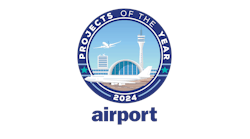One of our primary jobs as aviation consultants is assisting our airport clients in obtaining financing for their projects. Specifically, we explore alternative funding sources beyond the traditional Federal Aviation Administration (FAA) Airport Improvement Program (AIP), Passenger Facility Charge (PFC) local user fees, and tenant rents and fees.
While the Transportation Security Administration (TSA) provides funding for security-related projects, the current wave of infrastructure modernization requires additional funding options for airports.
The most significant new funding mechanism in aviation funding, beyond the traditional FAA, AIP and PFC funding, comes from the Bipartisan Infrastructure Law (BIL). The BIL provides aviation funding across three categories:
- Airport Infrastructure Grants (AIG) – Provides $2.89 billion annually to U.S. airports and $20 million annually for competitive FAA Contract Tower (FCT) grants.
- FAA-owned facilities and equipment – Provides $1 billion annually to be administered by the FAA Air Traffic Organization (ATO).
- Airport Terminal Program (ATP) – Provides $1 billion annually in competitive grants. These grants can be used for terminal buildings and gates, airport traffic access roads, walkways to and from terminal buildings, on-airport rail access and airport-owned air traffic control towers.
New Funding Options Available
In addition to the categories above, at least five other funding sources are available to airports depending on the project type and scope of work.
The Transportation Infrastructure Finance and Innovation Act (TIFIA) Program provides credit assistance for qualified projects of regional and national significance. The TIFIA program is intended to fill market gaps and leverage substantial private co-investment through supplemental, subordinate investment in critical improvements to the nation's transportation system.
In short, the TIFIA is a low-interest rate loan that does not accrue interest until the proceeds are drawn, with payment deferrable up to five years after substantial completion. PFC-eligible projects at airports are eligible for the TIFIA program.
The Rebuilding American Infrastructure with Sustainability and Equity (RAISE) program is designed to help urban and rural communities move forward on projects that modernize roads, bridges, transit, rail, ports, and intermodal transportation and make our transportation systems safer and more accessible, affordable and sustainable. Previously known as BUILD/TIGER discretionary grants, this federal funding program has $7.5 billion over five years to help projects get completed.
RAISE grants can apply to projects that elevate safety, environmental sustainability, quality of life, economic competitiveness and opportunity, partnership and collaboration, innovation, a state of good repair, mobility and community connectivity. In addition, the USDOT is evaluating how projects will improve accessibility for all travelers, bolster supply chain efficiency and support racial equity and economic growth – especially in historically disadvantaged communities and areas of persistent poverty.
The RAISE program has seen applications from airports on road construction and airport expansion, ground access circulation, multimodal connectors and bridges, train extensions, road connectors, air cargo and freight access, and rail realignment, to name a few.
The Strengthening Mobility and Revolutionizing Transportation (SMART) Grants Program is a discretionary grant program established by the BIL that appropriates $100 million annually for fiscal years 2022-2026. These grants are for eligible public sector agencies to conduct demonstration projects focused on advanced smart community technologies and systems to improve transportation efficiency and safety.
SMART grants may be used for projects that include coordinated automation, connected vehicles, sensors, systems integration, delivery and logistics, innovative aviation, a smart grid or traffic signals.
The SMART Grants Program is divided into two stages: Planning and Prototyping Grants (Stage 1) and Implementation Grants (Stage 2). You can expect that only recipients of Stage 1 grants will be eligible for Stage 2 grants.
The National Electric Vehicle Infrastructure (NEVI) Program provides dedicated funding to states to deploy electric vehicle (EV) charging infrastructure and establish an interconnected network to facilitate data collection, access and reliability. The guidance for funding eligibility focuses on creating a charging infrastructure that will put the U.S. on a nationwide network of 500,000 EV chargers by 2030 and ensure a convenient, affordable, reliable and equitable charging experience for all users.
Funding through the NEVI program can cover up to 80% of eligible project costs, including:
● Acquiring, installing and connecting a network of EV charging stations to facilitate data collection, access and reliability.
● Proper operation and maintenance of EV charging stations.
● Long-term EV charging station data sharing.
The Inflation Reduction Act of 2022 (IRA) invests $369 billion into climate-related provisions and creates a path toward significantly reducing carbon emissions by 40% by 2030 through multiple avenues. This is an excellent opportunity for a building owner to reduce their carbon footprint and lower their energy costs. The act also includes competitive grants for developing and producing sustainable aviation fuels (SAF) to get aviation on a path to net-zero emissions.
The IRA expands the existing 179D tax deduction for energy-efficient commercial buildings. Projects with an Energy Use Intensity (EUI) 25% better than the current ASHRAE 90.1 baseline can deduct $2.50 per square foot, capping out at $5 per square foot for a 50% EUI improvement. Baselining your existing facilities' EUI against your new or retrofitted facility can help incentivize the sustainable redevelopment of your facility.
Along with the 17D tax deduction, the IRA extends the existing Energy Investment Tax Credit. As a result, building owners can receive a tax credit of up to 30% of investment in qualifying renewable energy properties, including solar power and microturbines, fuel cells, geothermal heat pumps, combined heat and power and waste energy recovery properties.
The legislation includes smart glazing alongside solar, wind and storage for an Investment Tax Credit (ITC) and is expected to accelerate market adoption of smart glazing. When one of our clients couldn’t invest in smart glazing for its terminal because of the cost, this funding made it attainable with the same cost as standard glazing. It’s just one way this legislation can create smarter and better functioning buildings with minimal additional cost to the owner.
S.1055 – Airport Infrastructure Resilience Act of 2023 (AIRA) – While not approved yet, the proposed Airport Infrastructure Resilience Act of 2023 would establish a pilot program to provide competitive grants for airports to improve their infrastructure's resilience to changing conditions, weather events and natural disasters. Funding would be for new projects as well as for making improvements to existing infrastructure and may include the purchasing of monitoring equipment or services.
Within one year of its enactment, the Secretary shall establish the pilot program and award grants to incentivize planning, design and construction projects that mitigate the impact of airports on the environment, based on the best available science and engineering standards. The pilot program shall prioritize natural infrastructure and nature-based projects and require sponsors of airports to submit applications containing information on how the proposed project will benefit the airport and surrounding communities.
The pilot program shall be subject to public consultation and periodic reporting to the Secretary, who shall evaluate the program annually and submit reports to the Committee on Commerce, Science and Transportation, the Committee on Environment and Public Works of the Senate, and the Committee on Transportation and Infrastructure of the House of Representatives.
To carry out this section, $300 million shall be appropriated to the Secretary for each of fiscal years 2024 through 2028. Not less than 15% of the funds made available shall be used to award grants to sponsors of regional airports.
Of course, numerous other specialty programs might apply to airports based on the projects they might have underway. These programs include:
● Capital Investment Grants Program (CIG), which includes $8 billion plus an additional $15 billion subject to the annual Congressional budget process.
● The EPA Clean Heavy-Duty Vehicles program has $1 billion to support the adoption and deployment of zero-emission Class 6 or Class 7 heavy-duty vehicles.
● The BIL Grants to Reduce Air Pollution at Ports is worth $3 billion to support the purchase and installation of zero-emission equipment and technology at ports.
● The EPA's Diesel Emissions Reduction Act (DERA) program funds grants and rebates that protect human health and improve air quality by reducing harmful emissions from diesel engines.
● Multiple state programs can supplement federal grants.
As you can see, the majority of these programs outside of traditional aviation funding are well-steeped in environmental, social and governance (ESG) criteria, moving federally funding projects toward more significant energy conservation, resiliency and reduced emissions. They also provide opportunities for historically underserved communities, greater health and safety, as well as diversity and opportunity.
To one degree or another, all of the aforementioned funding sources lean into ESG. As such, part of your success strategy needs to include showing how your need leans into ESG.
Pursuing These Funds Requires Reinvention
Consultants need to be able to help clients know what funding mechanisms are out there, which ones can be used, and what to do to comply with funding processes.
Many of these federal programs are taking a closer look at how projects can improve sustainability and resiliency, as well as diversity, equity and inclusion (DEI). It’s important to focus on these issues, as these impacts can make the difference in what projects are funded.
When preparing your project pitch, don’t just think about your congressional delegation. There are advocates in your community, social justice groups and other stakeholders who can take up your cause on your behalf. Be sure to make time to include these stakeholders and talk the project over with them to help them get invested.
Also, let us not forget that so many people don’t know how airport projects are funded. They often associate airport funding with local city and county bond funding, something that they as a community are going to have to pay for. In reality, these projects are primarily paid for by user fees, government funding and revenue from non-aeronautical activities – and that’s a way better deal than the fees you’ll pay on concert ticket sites.
This is especially important to remember now when we have environmental and equity concerns. New influencers and stakeholders may not be as familiar with our projects and how they are funded. That’s why telling your story about why these projects are happening and how they will benefit your community is so important.
Story plays a big role in which projects receive funding, so have yours ready. A lot of our airport friends have learned with the BIL that the FAA has expanded the project summaries from 300 to 450 characters. As a result, steer clear of writing in code and using a bunch of abbreviations like you’re taking out an old newspaper classified ad. Instead, cut to the heart of what the project is and how it’s going to impact the community.
Is there still a money tree? Yes, but it does require a green thumb and some tending.
Roddy Boggus, AIA, NCARB, is a vice president of aviation at RS&H. A 30-year aviation professional, he excels in both airline- and airport-based practices as well as alternative delivery methods. Roddy is a facilities expert who has helped many large and medium hub airports streamline and provide exceptional service stakeholders through passenger flow, queuing, and operational efficiencies. He is a former Board Chair for the Airport Consultants Council (ACC) and Airports Council International (ACI) and has also served the International Association of Airport Executives (IAAE). He can be reached at Roddy.Boggus@rsandh.com.






